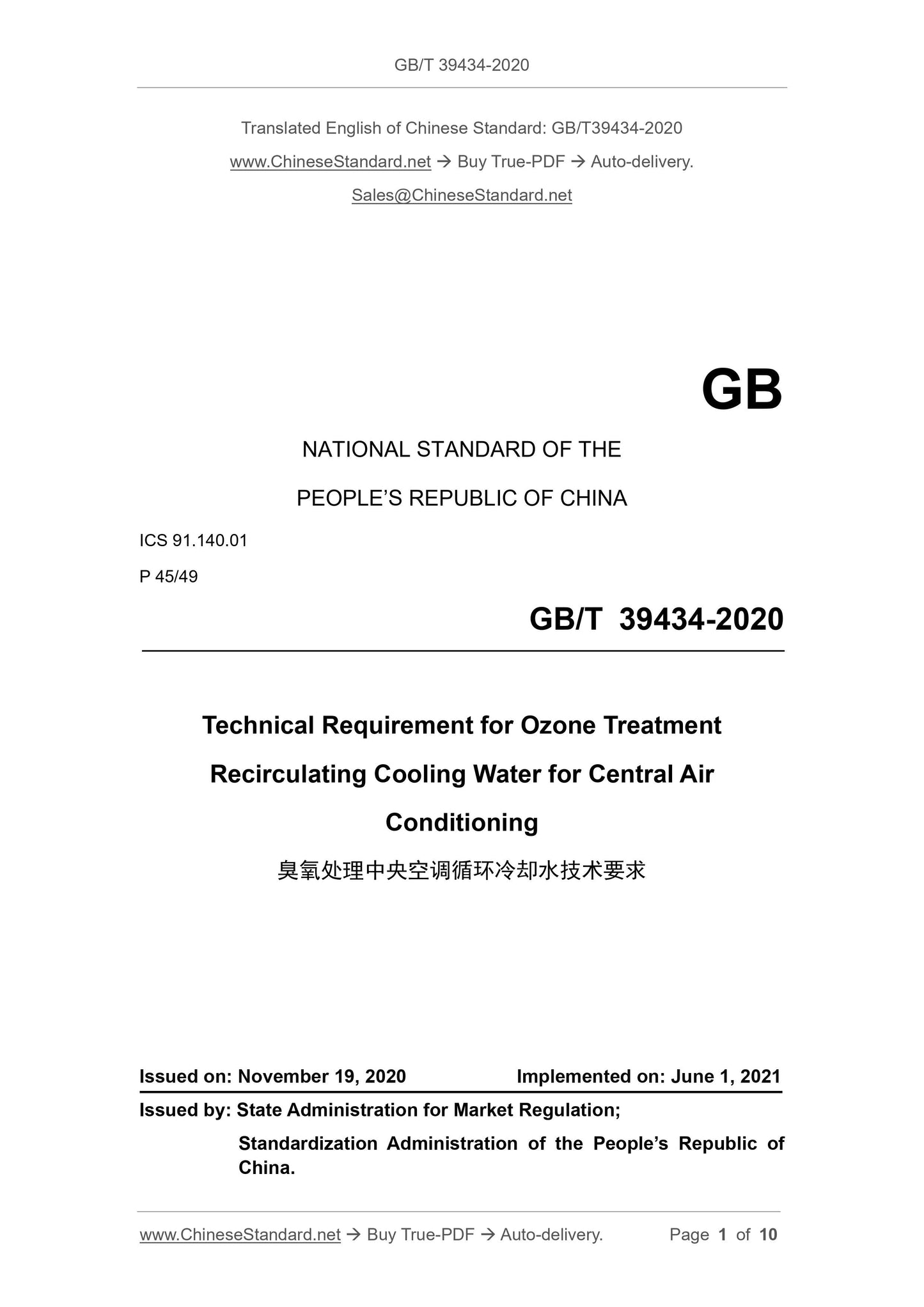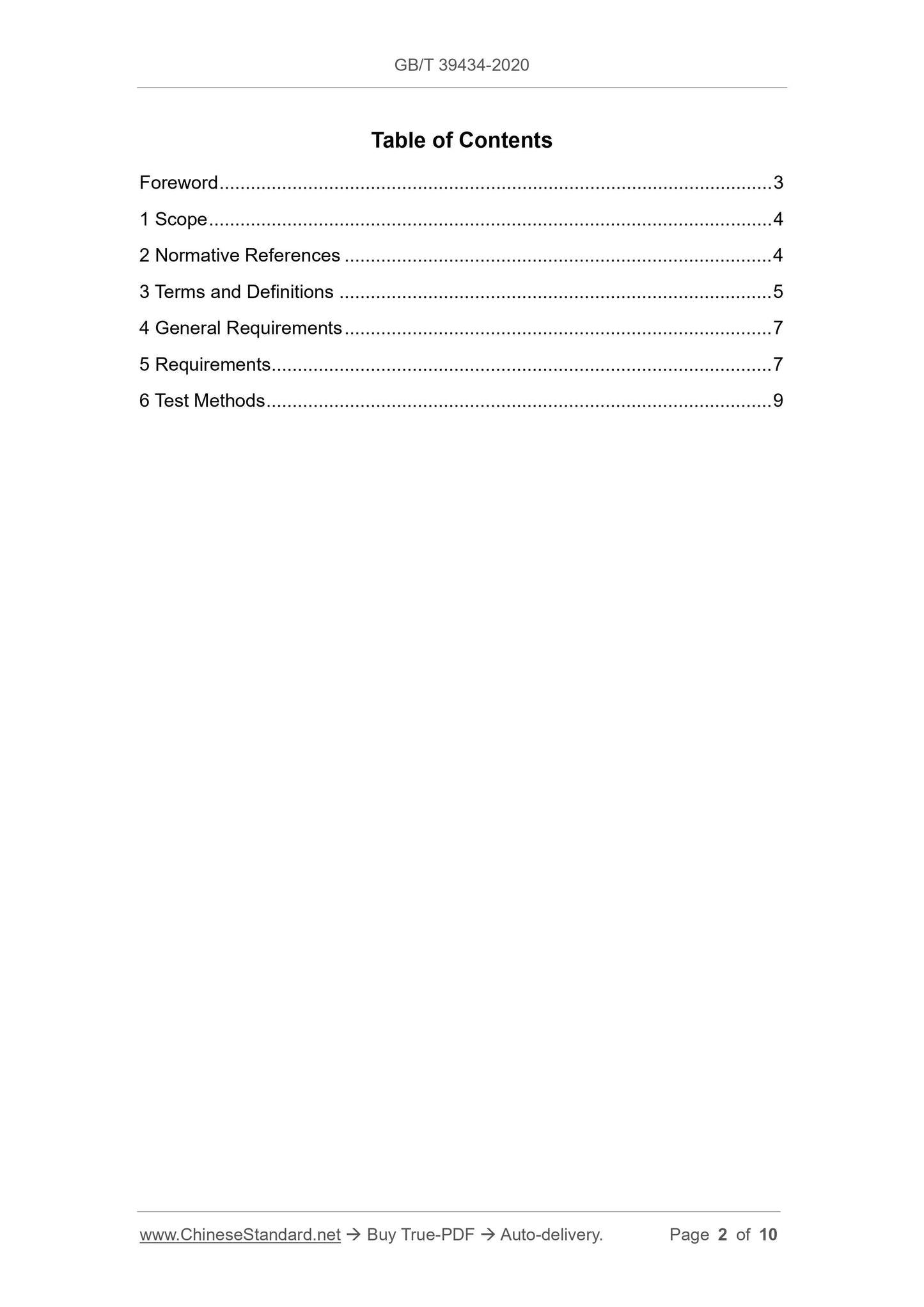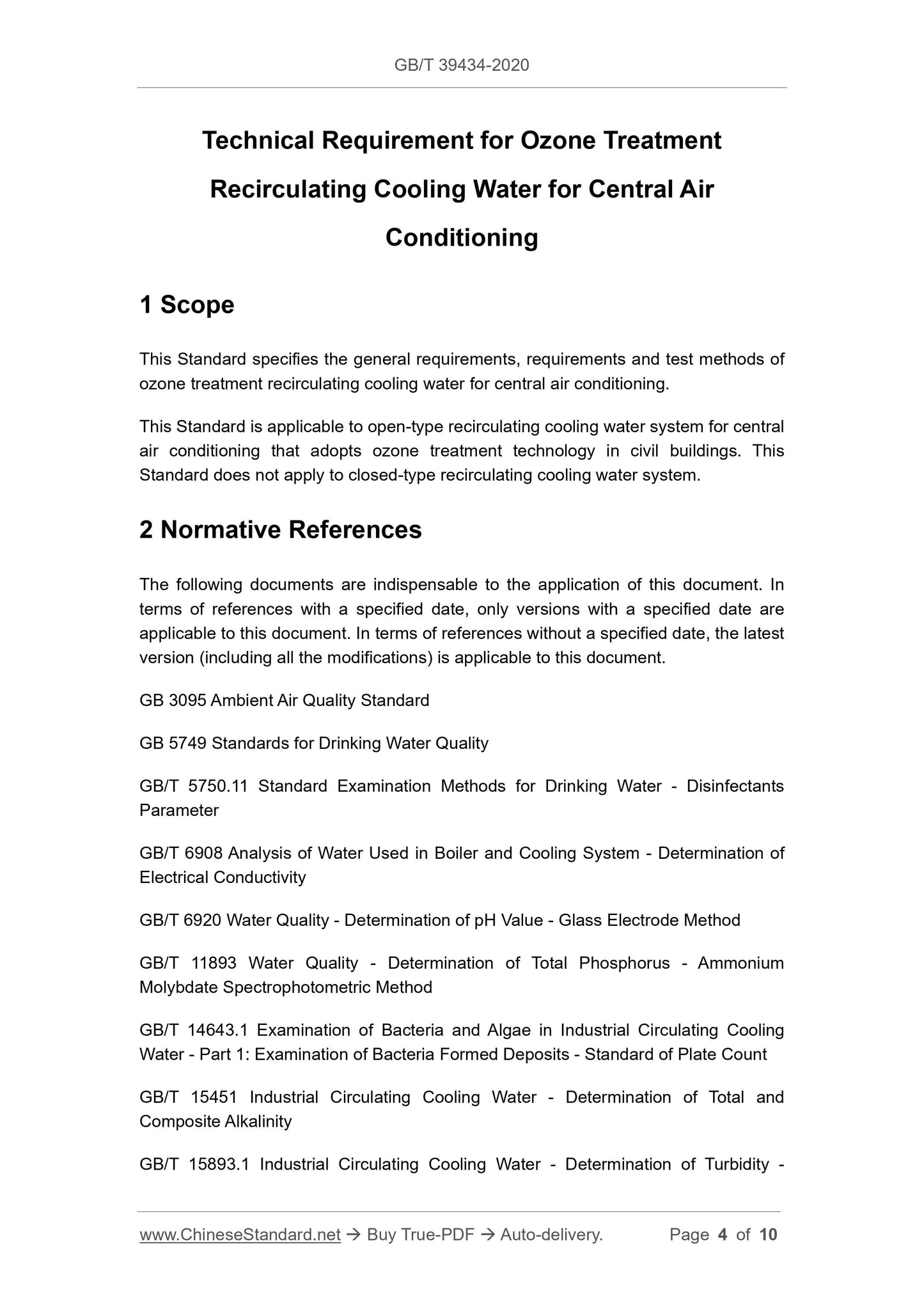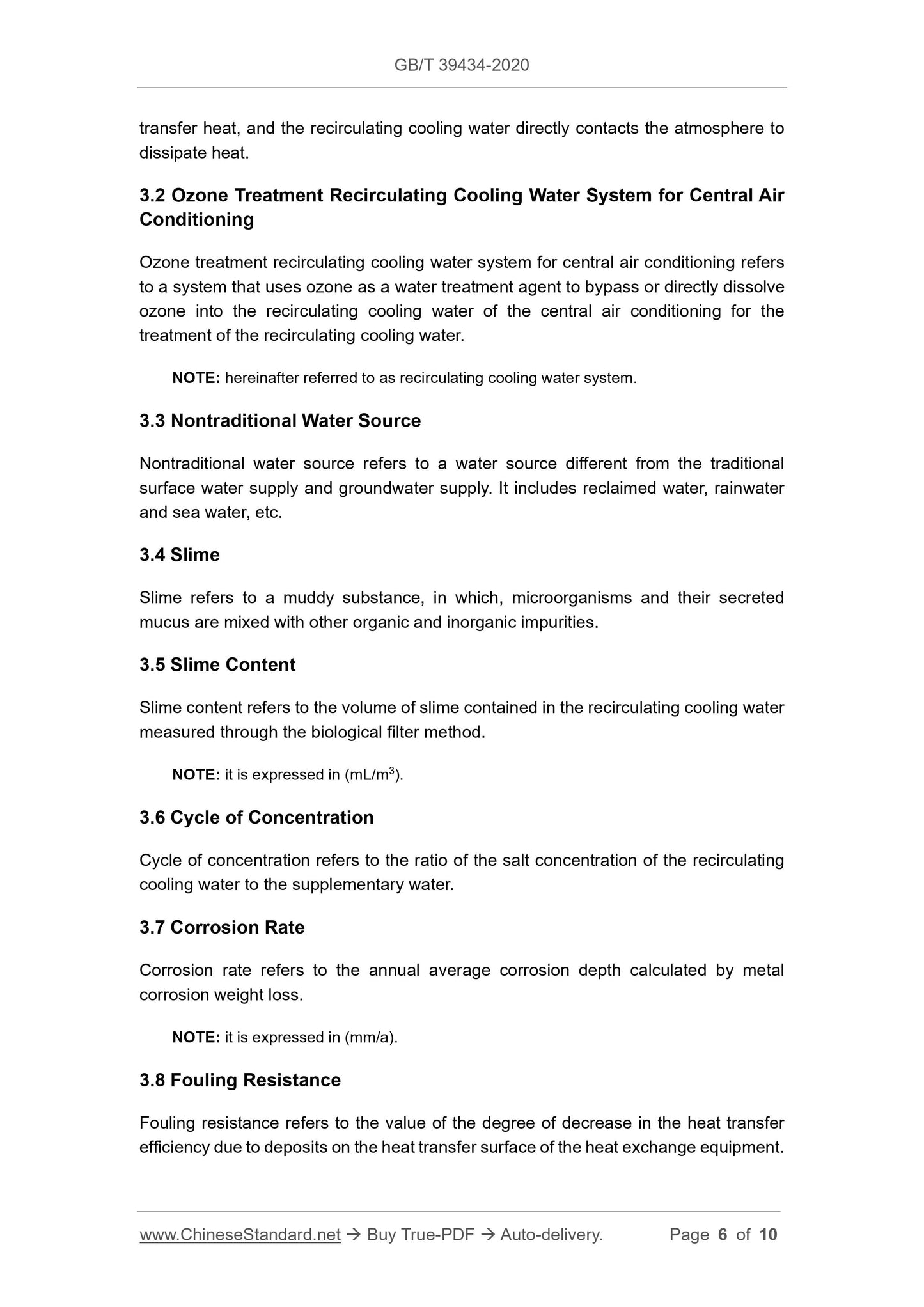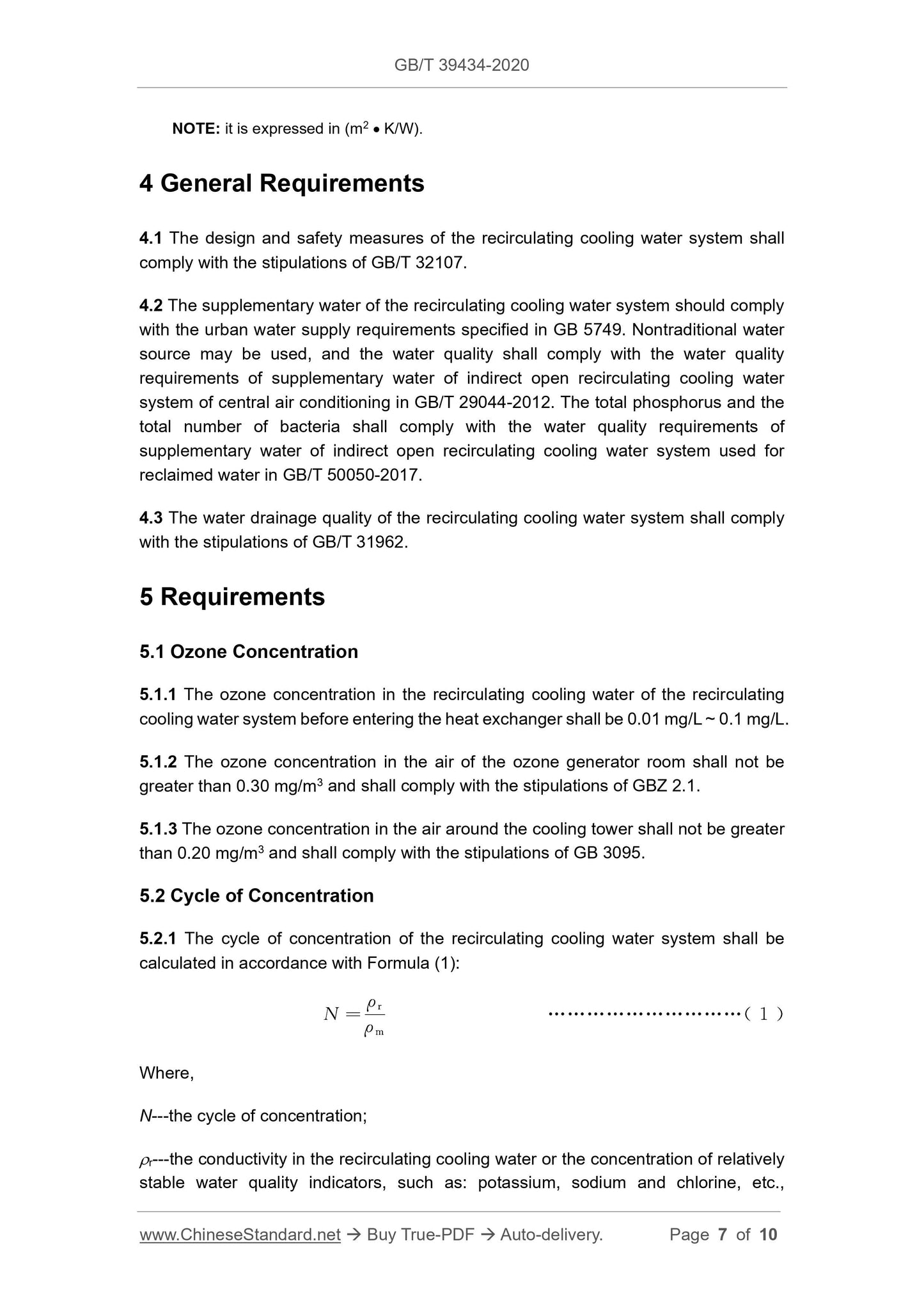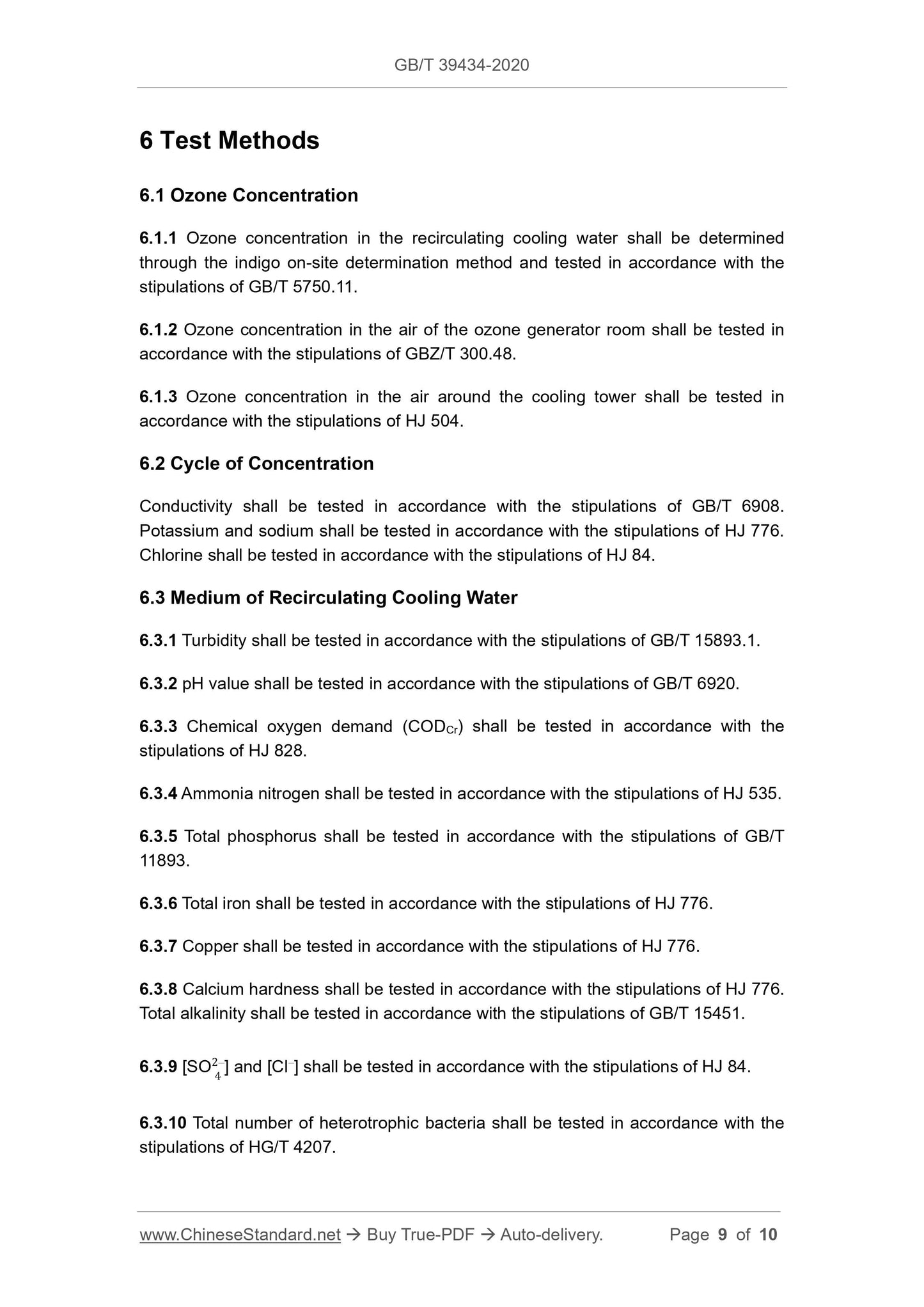1
/
of
6
www.ChineseStandard.us -- Field Test Asia Pte. Ltd.
GB/T 39434-2020 English PDF (GB/T39434-2020)
GB/T 39434-2020 English PDF (GB/T39434-2020)
Regular price
$125.00
Regular price
Sale price
$125.00
Unit price
/
per
Shipping calculated at checkout.
Couldn't load pickup availability
GB/T 39434-2020: Technical requirement for ozone treatment recirculating cooling water for central air conditioning
Delivery: 9 seconds. Download (and Email) true-PDF + Invoice.Get Quotation: Click GB/T 39434-2020 (Self-service in 1-minute)
Newer / historical versions: GB/T 39434-2020
Preview True-PDF
Scope
This Standard specifies the general requirements, requirements and test methods ofozone treatment recirculating cooling water for central air conditioning.
This Standard is applicable to open-type recirculating cooling water system for central
air conditioning that adopts ozone treatment technology in civil buildings. This
Standard does not apply to closed-type recirculating cooling water system.
Basic Data
| Standard ID | GB/T 39434-2020 (GB/T39434-2020) |
| Description (Translated English) | Technical requirement for ozone treatment recirculating cooling water for central air conditioning |
| Sector / Industry | National Standard (Recommended) |
| Classification of Chinese Standard | P45 |
| Word Count Estimation | 7,770 |
| Date of Issue | 2020-11-19 |
| Date of Implementation | 2021-06-01 |
| Regulation (derived from) | National Standard Announcement No. 26 of 2020 |
| Issuing agency(ies) | State Administration for Market Regulation, China National Standardization Administration |
Share
